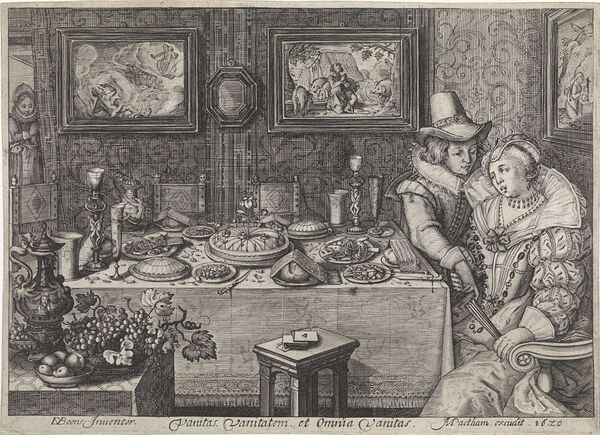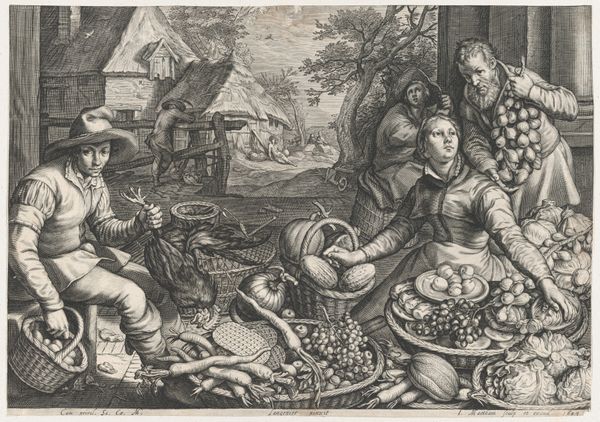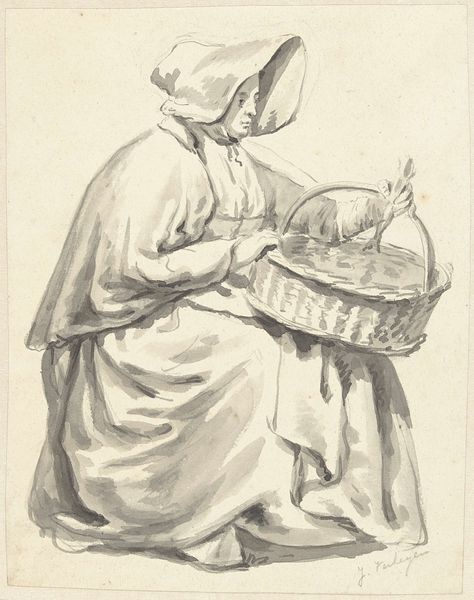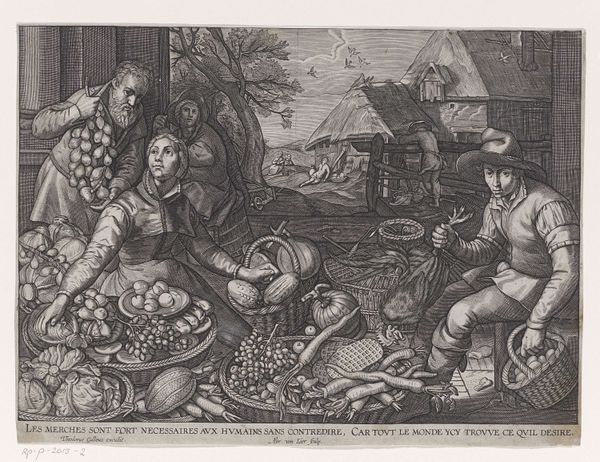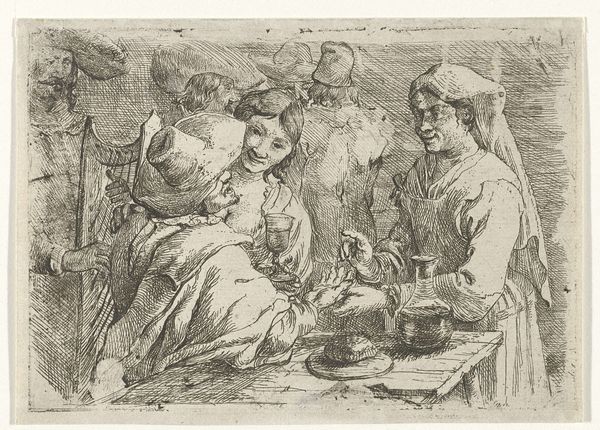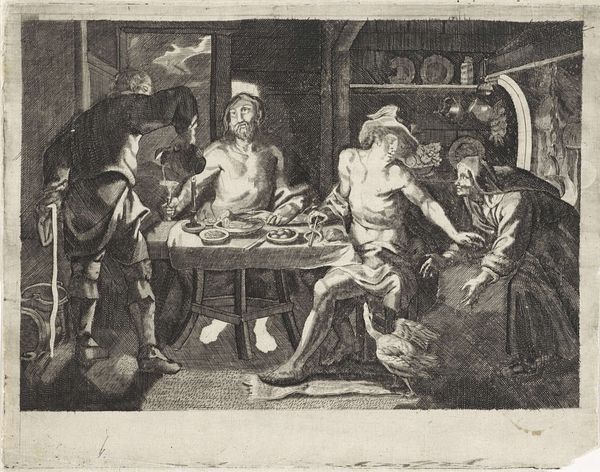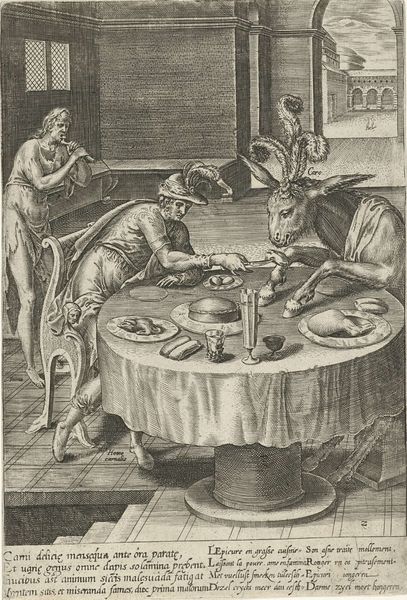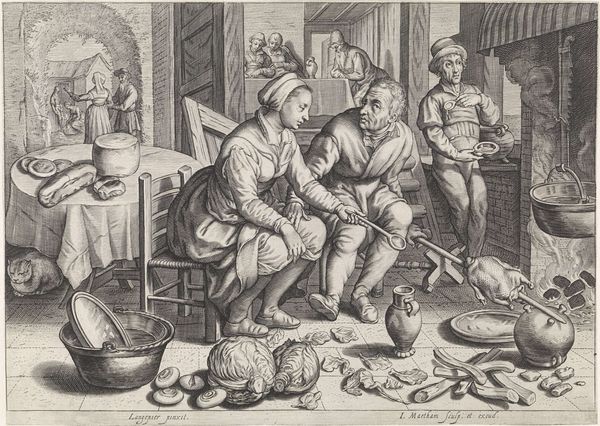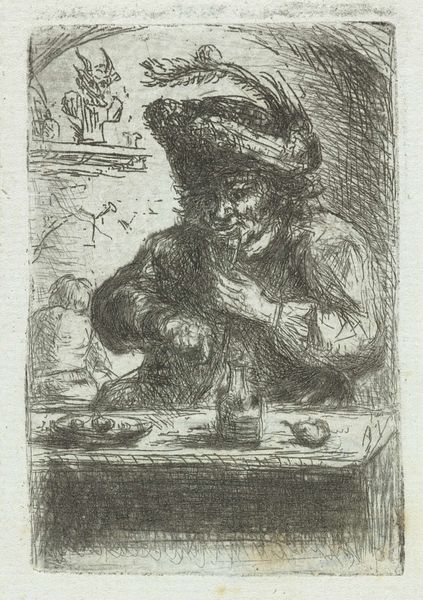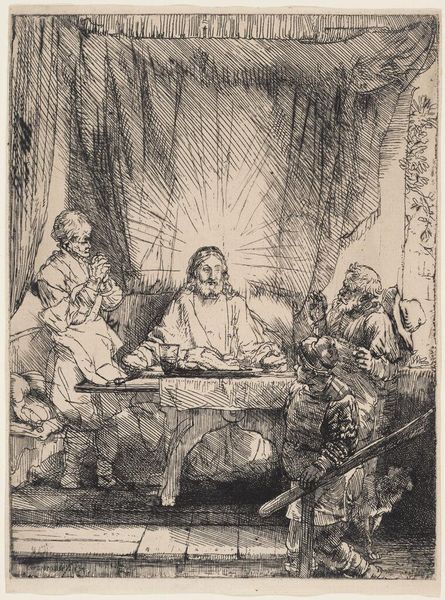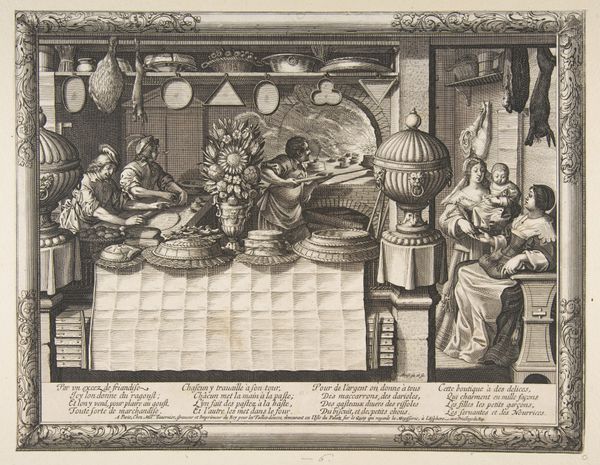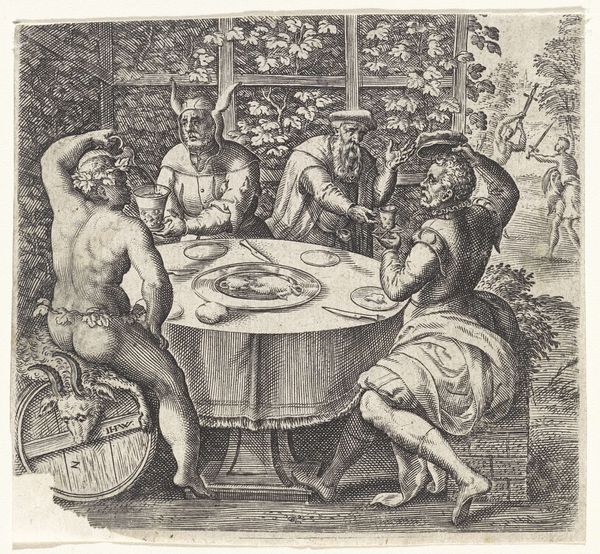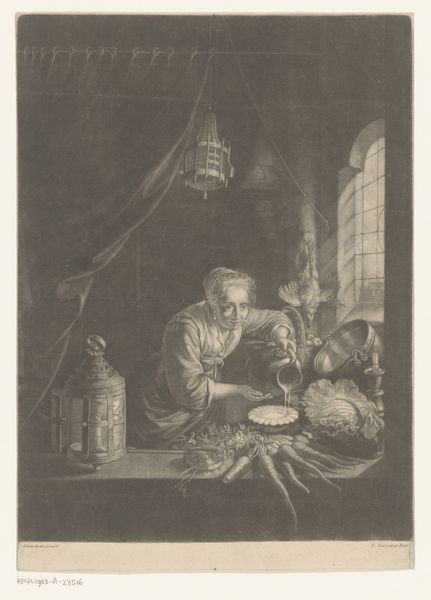
oil-paint
#
baroque
#
dutch-golden-age
#
oil-paint
#
oil painting
Copyright: Public domain
Curator: Osias Beert painted this, "Still Life with Artichokes", in 1610. Notice how the oil paint renders each object meticulously: oysters, artichokes, even candied fruit. Editor: My first thought is excess! The array of goods—food displayed like a symbol of status—feels so heavy, even indulgent. Is this Baroque display a signifier of class? Curator: Absolutely. These still lifes reflect the burgeoning merchant class during the Dutch Golden Age and their pursuit of luxury. But look at the careful depiction: the reflections in the glassware, the texture of the wicker basket. The labor involved is immense. Editor: The presence of imported goods like the artichokes makes me think about global trade at the time and all the forced labor extracted from different parts of the world that funded and provisioned the lifestyle represented in this piece. The stark contrast between this lifestyle and those who produced these materials needs acknowledging. Curator: Exactly! It raises interesting questions about the consumerism inherent in this period, a time of major mercantile growth in the region. Were such elaborate meals and settings typical or aspirational? Editor: I see this painting almost as an advertisement. Not just for the goods themselves, but for a lifestyle that was being strategically crafted. Also, are the artichokes there to signify virginity or marital affection? The sexual connotations would resonate in that male-dominated society. Curator: That’s a really insightful reading! But it can also be about something simpler: Look how each item engages with light and volume! Beert mastered illusionism, showcasing skill and the inherent value of representation itself, even of modest materials like a loaf of bread. Editor: Well, perhaps this tension is what makes it all so compelling: beauty and technical prowess married to displays of wealth during an era defined by inequality. Curator: Indeed. Examining its craftsmanship alongside socio-historical contexts yields such a wealth of perspective, doesn't it? Editor: Precisely, it’s about understanding the interwoven forces that shaped both the artwork and the world it reflected.
Comments
No comments
Be the first to comment and join the conversation on the ultimate creative platform.
